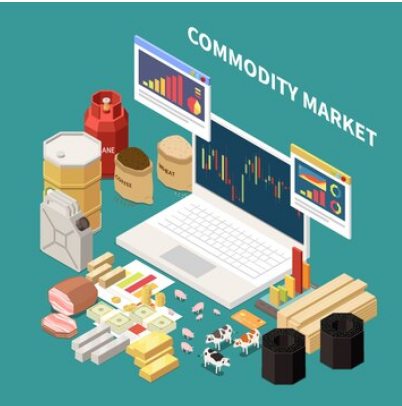
Commodity Market Investment Horror Stories and Their Valuable Lessons
Commodities, including oil, gold, agricultural products, and metals, play a crucial role in the global economy and investment portfolios. However, the commodity market is notorious for its volatility, subject to fluctuations driven by factors such as geopolitical tensions, supply-demand dynamics, and economic conditions. In this article, we’ll delve into a list of investment horror stories from commodity market crashes, highlighting the lessons investors can glean from these tumultuous events.
-
The Oil Price Crash of 2014-2016:
- The oil price crash, triggered by oversupply and weakening demand, led to a dramatic decline in oil prices from over $100 per barrel to below $30 per barrel. The crash wreaked havoc on oil-producing countries, energy companies, and investors alike.
- Lesson: Overreliance on commodities exposed to cyclical price fluctuations can lead to significant losses. Diversification across asset classes and hedging strategies are essential for mitigating commodity market risks.
-
The Gold Price Collapse of the 1980s:
- Following a decade-long bull market, gold prices collapsed in the early 1980s, declining by over 65% in just a few years. The crash was fueled by rising interest rates, a strengthening U.S. dollar, and waning inflationary pressures.
- Lesson: Commodities like gold can experience prolonged periods of price volatility and drawdowns. Investors should carefully consider the macroeconomic factors driving commodity prices and maintain a long-term perspective.
-
The Copper Market Crash of 2008-2009:
- The global financial crisis of 2008-2009 triggered a sharp downturn in commodity markets, including copper, a key industrial metal. Demand contraction from China, the world’s largest consumer of copper, coupled with oversupply, led to a collapse in copper prices.
- Lesson: Commodity markets are susceptible to macroeconomic shocks and cyclical downturns. Risk management strategies, including position sizing and stop-loss orders, are crucial for protecting capital during market downturns.
-
The Coffee Crisis of the Late 1990s:
- Coffee prices plummeted to historic lows in the late 1990s due to oversupply, exacerbated by the collapse of the International Coffee Agreement and the proliferation of coffee-producing countries.
- Lesson: Commodity markets, particularly agricultural commodities, are vulnerable to supply gluts and geopolitical factors. Understanding the supply chain dynamics and monitoring global production trends is essential for commodity investors.
-
The Silver Thursday Crash of 1980:
- The Hunt brothers attempted to corner the silver market in the late 1970s, driving prices to record highs. However, regulatory intervention and margin calls led to a sharp reversal, causing silver prices to crash by over 50% in a matter of days.
- Lesson: Speculative excesses and market manipulation can lead to unsustainable price bubbles and subsequent crashes. Investors should exercise caution when chasing speculative trends and monitor regulatory developments closely.
-
The Natural Gas Price Collapse of 2008:
- Natural gas prices experienced a sharp decline in 2008, driven by oversupply, mild weather conditions, and the onset of the global financial crisis. Prices fell from record highs to multi-year lows, causing significant losses for investors and energy companies.
- Lesson: Commodity prices are influenced by a complex interplay of supply, demand, and external factors. Fundamental analysis, including supply-demand forecasts and inventory levels, can help investors anticipate price movements and manage risk.
-
The Steel Market Crash of 2015-2016:
- The global steel market experienced a severe downturn in 2015-2016, driven by overcapacity, slowing demand from China, and trade tensions. Steel prices plunged to multi-year lows, leading to bankruptcies and restructuring across the industry.
- Lesson: Cyclical industries like steel are prone to boom-and-bust cycles. Investors should be prepared for volatility and economic downturns by maintaining diversified portfolios and allocating capital prudently.
-
The Cocoa Market Crash of 2017:
- Cocoa prices suffered a steep decline in 2017 due to oversupply, weak demand from emerging markets, and unfavorable weather conditions in key cocoa-producing regions. Prices fell to multi-year lows, adversely affecting cocoa farmers and commodity traders.
- Lesson: Commodity markets are susceptible to supply disruptions and weather-related events that can impact prices. Investors should stay informed about production trends and geopolitical developments to anticipate price movements.
-
The Uranium Price Crash:
- The uranium market experienced a prolonged downturn following the Fukushima nuclear disaster in 2011. Concerns about nuclear safety and regulatory scrutiny led to a decline in uranium prices, causing significant losses for uranium producers and investors.
- Lesson: Commodity markets can be highly sensitive to geopolitical events and regulatory changes. Investors should consider geopolitical risks and industry-specific factors when investing in commodities with long-term growth prospects.
-
The Agricultural Commodity Crash of 2020:
- Agricultural commodity prices faced downward pressure in 2020 due to the COVID-19 pandemic, disruptions to supply chains, and reduced demand from the hospitality and foodservice sectors. Prices for crops like corn, soybeans, and wheat experienced volatility, impacting farmers and commodity traders.
- Lesson: External shocks, such as pandemics and geopolitical tensions, can disrupt commodity markets and lead to price fluctuations. Investors should monitor global economic trends and diversify their portfolios to mitigate risk during periods of uncertainty.
Conclusion
Commodity market crashes serve as sobering reminders of the inherent risks and volatility associated with investing in raw materials and natural resources. By learning from past failures, investors can gain valuable insights into the complexities of commodity markets and develop robust risk management strategies. Whether it’s diversifying across asset classes, conducting thorough research, or staying informed about global economic trends, the lessons gleaned from commodity market crashes can help investors navigate turbulent market conditions and protect their investment portfolios.


